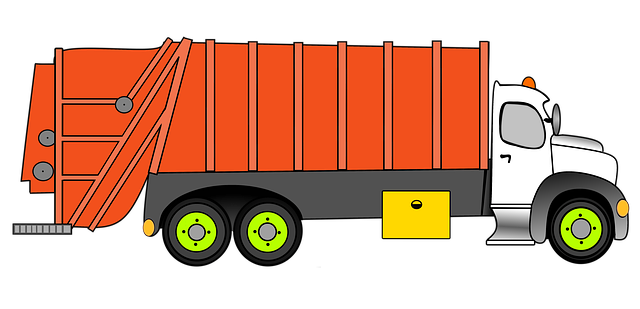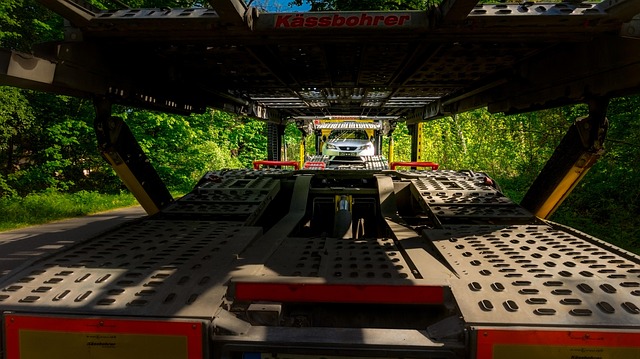Looking to register your car in California? This comprehensive guide will walk you through the process, ensuring a smooth experience. First, understand the state’s car registration requirements, including necessary documents and accurate Vehicle Identification Number (VIN) verification using a reliable VIN verifier. Then, choose between online or in-person registration. Once approved, obtain your license plate and register your vehicle’s title. Follow these steps to navigate the process effortlessly.
- Understand California Car Registration Requirements
- Gather Necessary Documents for Vehicle Registration
- Verify Vehicle Identification Number (VIN) Accuracy
- Complete Online or In-Person Registration Process
- Obtain License Plate and Register Vehicle Title
Understand California Car Registration Requirements

Before registering your car in California, it’s crucial to understand the state’s specific requirements. Unlike some other states, California demands a thorough process for all vehicles, regardless of age or make. One key step is ensuring accurate and up-to-date vehicle identification number (VIN) information. The VIN is a unique code that verifies the car’s authenticity and history; it plays a vital role in the registration process. A reliable method to confirm your vehicle’s VIN is through mobile vin verification services, which provide a convenient and quick way to get this essential data ready for registration.
Additionally, California requires a complete inspection of your car, known as a “vin inspection,” to ensure it meets safety and environmental standards. This step involves checking various components like brakes, lights, emissions systems, and more. Once you’ve satisfied these requirements, you’re well on your way to successfully registering your vehicle in the Golden State.
Gather Necessary Documents for Vehicle Registration

Before you begin the registration process, make sure you have all the essential documents ready. The primary piece of information required is the Vehicle Identification Number (VIN), which can be found on the vehicle’s license plate or in its paperwork. Additionally, you’ll need proof of ownership, such as a purchase agreement or title certificate. It’s crucial to ensure the VIN is accurate and verified for any potential discrepancies. Utilize a reliable VIN verifier to cross-check this critical data, especially when conducting a mobile vin verification or vin inspection, as it plays a pivotal role in the registration process.
Gathering these documents beforehand streamlines the registration procedure. Other necessary items include your driver’s license, proof of insurance, and potentially, if applicable, any previous registration records. With all these documents prepared, you’re well on your way to successfully registering your vehicle in California.
Verify Vehicle Identification Number (VIN) Accuracy

Before you begin the registration process, it’s crucial to ensure your Vehicle Identification Number (VIN) is accurate. The VIN is a unique code that identifies your car and is essential for proper documentation. Double-check the VIN plate located on the vehicle’s chassis or consult your vehicle’s owner manual if you’re unsure where to find it. A simple typo or mistake in recording this number can cause delays, so use a reliable vin verifier to cross-reference and ensure its correctness.
For added convenience, consider using a mobile vin verifier app that allows you to quickly scan and verify the VIN digitally. This modern approach streamlines the initial registration steps by providing instant results, making it an efficient alternative to traditional VIN inspection methods.
Complete Online or In-Person Registration Process

You have two options for registering your car in California: complete the process online or in person at a DMV office. Both methods require gathering essential documents and providing accurate information, including your vehicle’s unique Vehicle Identification Number (VIN). A VIN verifier, whether used online or through a mobile vin inspection service, plays a crucial role in ensuring the vehicle’s history is accurately represented during registration.
Online registration offers convenience with its straightforward steps and potential for faster turnarounds. Conversely, visiting a DMV office may be necessary if documents are missing or require verification. A mobile vin verifier can streamline this process by providing immediate results to help resolve any issues during either method of registration.
Obtain License Plate and Register Vehicle Title

After completing your vehicle’s purchase, it’s time to obtain the necessary paperwork for registration. The first step involves securing a vehicle title, which confirms ownership and is required during the registration process. Most states, including California, require a bill of sale or purchase agreement as proof of ownership when registering a car. This document should include details like the seller’s information, purchase price, and vehicle identification number (VIN). You can obtain these from your dealership or previous owner.
Additionally, you’ll need to arrange for a license plate and register your vehicle with the California Department of Motor Vehicles (DMV). In today’s digital age, many people opt for mobile VIN verification services, which allow you to quickly and conveniently validate your vehicle’s history and identify potential issues before registration. These services can be done remotely, making it an efficient step in the registration process.
Registering a car in California involves understanding state requirements, gathering essential documents, verifying crucial details like the VIN using a reliable VIN verifier, completing the registration process online or in-person, and obtaining necessary plates. By following these steps meticulously, you can ensure your vehicle is legally registered and roadworthy in the Golden State.
